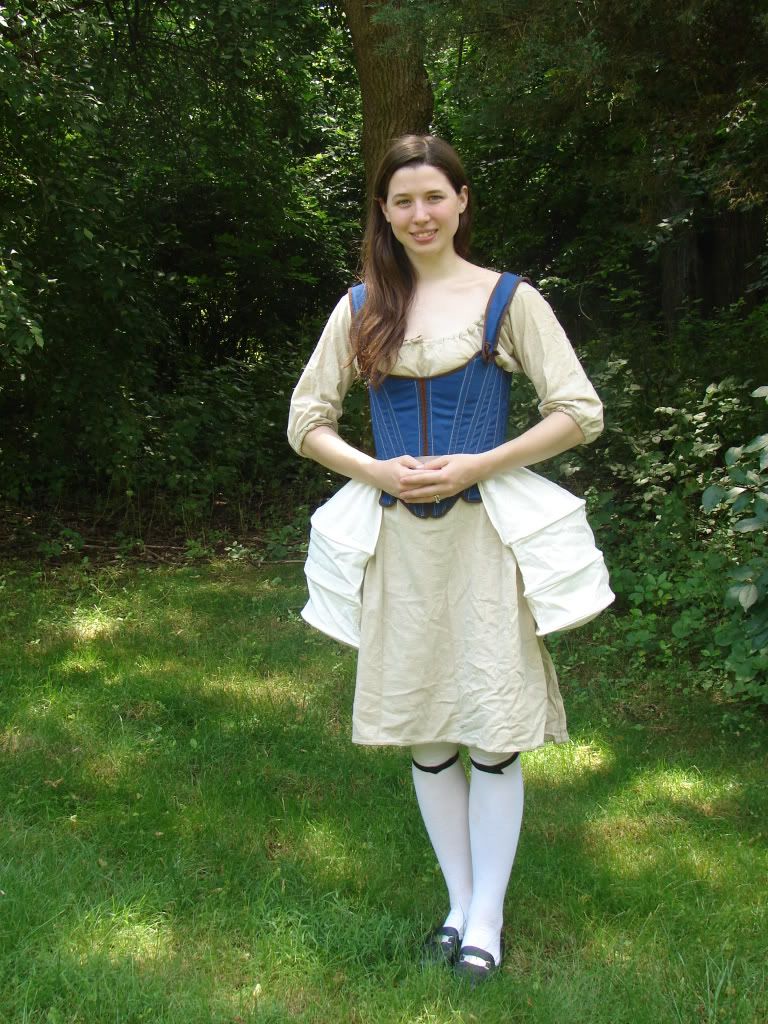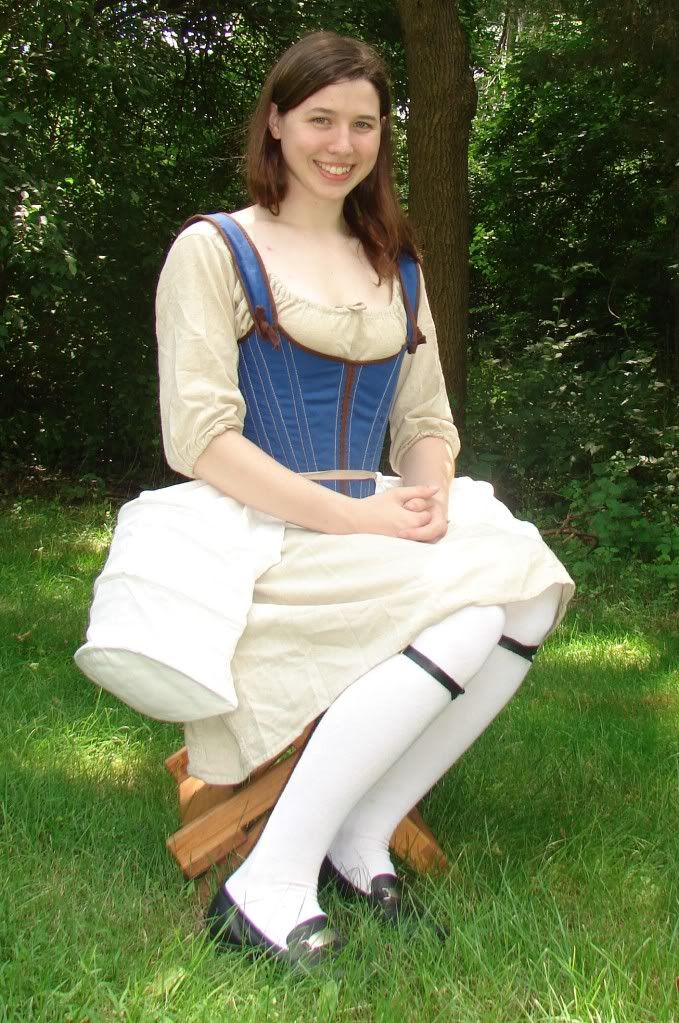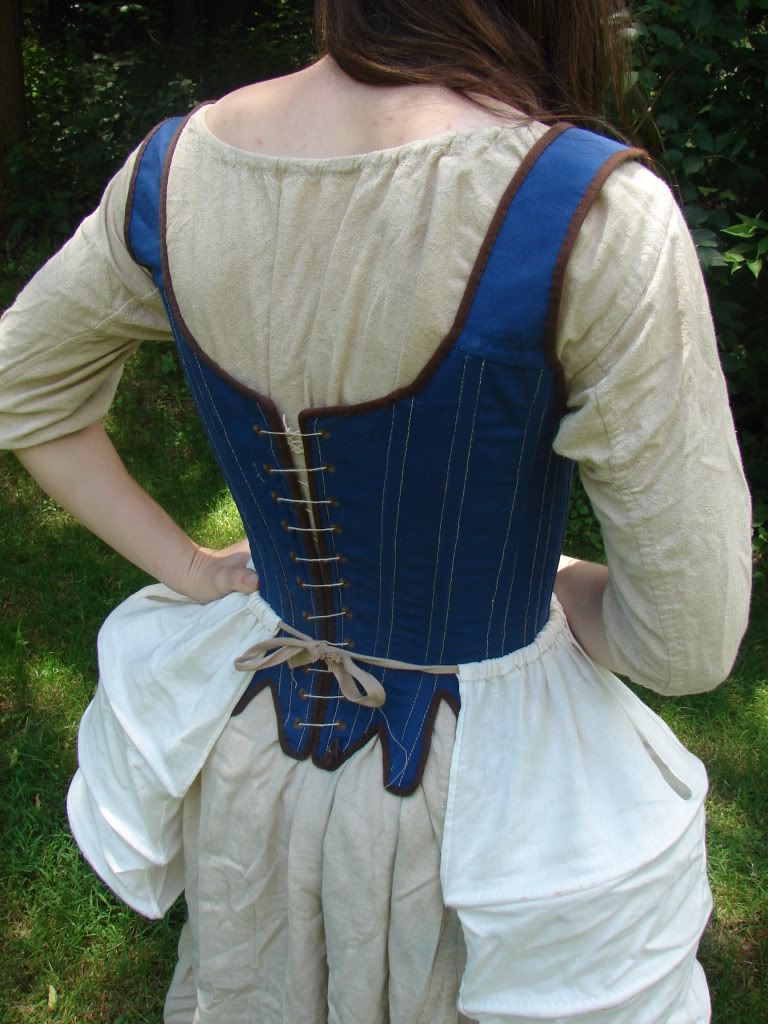While it's true that those from the 18th century did not wear underwear as we know them, underwear - at least for the 18th century woman - constituted a large portion of the clothing items worn.
Every 18th century woman had two basic pieces of undergarment - a chemise (or shift, if you're English) and stays. The chemise (pronounced sheh-MEES) was a woman's nightgown, underdress, and basic, everyday garment. A woman would wear her chemise constantly, both night and day. The chemise was the "panties" of the 18th century period. Shifts or chemises would usually be made out of linen, as that was the most common fabric of the time (the cotton gin had not yet been invented). The fineness of the linen was determined based on one's social class. If you were a higher class citizen, you could afford a finer linen.
And for a bra? How about something roughly the dimensions of a tank top, but with whale-bone inserted all the way around? This article - known as stays, or jumps if they're without boning - was also a staple for the 18th century woman, just as a bra is a staple for most of us modern women. This garment also would have been made out of linen, although it would have been a much coarser and heavier linen than that used for a chemise or shift. Stays helped define a woman's waist and bust, and provided support for the conical figure that was highly desired during the time period. Although stays sound scary, I actually prefer my pair over modern undergarments! Stays provide excellent support for your back, and give those of us with small busts a little extra "boost"! The downside? They lace up the back, so you need assistance donning them (even poor women would not have been expected to dress all by themselves).
There is one other undergarment piece that was more or less optional. Known as panniers, these "giant pockets" helped provide women with the large-hip look, which was extremely popular for the time (the bigger your hips, the easier you could birth children). Panniers - from the French word "panier" - would have been constructed of linen and had channels sewn through them. Boning or reeds would then have been added to the channels, thus making sort of half-baskets at each side of the woman's body. The best part about panniers? They really are giant pockets, which can be reached by slits in the woman's dress or skirts. You can fit everything but the kitchen sink in these babies!




No comments:
Post a Comment